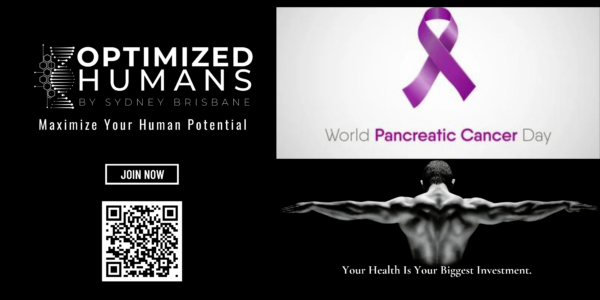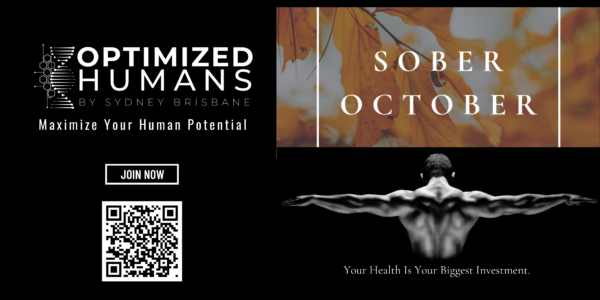What is Sober October? Origins, Health Benefits, and Why You Should Join In
Sober October is an annual movement encouraging people to take a break from alcohol for 31 days during the month of October. This wellness challenge offers a chance to reset your body, mind, and habits, providing a break from alcohol’s effects and allowing for a clearer perspective on your relationship with drinking. But where did this movement come from, and what are the benefits of participating?
Origins of Sober October
Sober October originated in the UK in 2014, led by the charity Macmillan Cancer Support. Initially, it was a fundraising campaign encouraging participants to give up alcohol for a month to raise money for cancer research. It quickly gained popularity beyond its charitable origins, as people realized the personal benefits of abstaining from alcohol for a period, including improved physical and mental health.
The Health Benefits of Sober October
Taking a break from alcohol, even for a short time, can have remarkable effects on your body and mind. Here are a few benefits you can expect from participating in Sober October:
- Improved Sleep: Alcohol can disrupt sleep patterns, causing you to wake up feeling groggy. Going alcohol-free allows your body to restore its natural sleep cycle, leading to more restful nights.
- Better Skin: Alcohol dehydrates your body, and your skin often shows the effects. Without alcohol, many people notice a clearer, more hydrated complexion.
- Boosted Mental Clarity: Alcohol can fog your thinking and slow your cognitive functions. When you cut it out, you may find it easier to focus, think clearly, and be more productive.
- Weight Management: Alcohol is often high in empty calories. By cutting it out, you may experience weight loss or better control over your calorie intake.
- Enhanced Mood: Alcohol can act as a depressant, lowering your mood over time. People often report feeling more emotionally stable and positive during and after a month without drinking.
Participating in Sober October offers a valuable opportunity to reassess your habits and make positive changes in your life, setting the stage for long-term health and wellness.
Ready to take your health to the next level? With Optimized Humans, you can access personalized workout and nutrition plans, support for your wellness goals, and a community to keep you motivated. Sign up today and receive a special discount on your membership by mentioning this blog! Start your Sober October challenge with us, and take the first step towards a fitter, healthier, and more optimized you.


Let’s face it embarking on a “diet” (a word I hate using because of the stigma, I prefer clean or healthy meal plan/planning) journey often means paying close attention to macronutrients—proteins, fats, and carbohydrates—that fuel our bodies. Even seasoned dieters can make common mistakes when it comes to balancing these essential nutrients. Let’s dive into spoon and fork into the most frequent macro mistakes and how to avoid them.
1. Overemphasizing Protein Intake
The Mistake: While protein is crucial for muscle repair and growth, overemphasis on it can lead to neglecting other essential nutrients. Many experienced dieters fall into the trap of consuming too much protein compared to a healthy balance, believing it will lead to greater muscle gain or fat loss.
The Fix: According to the Dietary Guidelines for Americans, the recommended dietary allowance (RDA) for protein is 46 grams per day for women and 56 grams per day for men. Instead of focusing solely on protein, ensure you’re getting a balanced intake of all macronutrients. A good rule of thumb is to distribute your daily calorie intake to about 10-35% protein, 45-65% carbohydrates, and 20-35% fats.
***Personal Tip (1 gram per pound of total bodyweight, or 1 gram per pound of goal bodyweight)
2. Neglecting Carbohydrates
The Mistake: Carbohydrates often get a bad rap in diet culture. Many dieters, even experienced ones, may cut carbs drastically, thinking it will speed up weight loss. However, this can lead to energy slumps and nutrient deficiencies.
The Fix: Carbohydrates are the body’s primary energy source. The Institute of Medicine recommends that 45-65% of your daily calories come from carbohydrates. Focus on consuming complex carbohydrates such as whole grains, vegetables, and fruits, which provide sustained energy and essential nutrients.
3. Ignoring the Importance of Fats
The Mistake: In an effort to reduce calorie intake, some dieters cut out fats almost entirely. This can be detrimental, as fats are essential for hormone production, brain health, and the absorption of fat-soluble vitamins (A, D, E, and K).
The Fix: Healthy fats should comprise 20-35% of your daily calorie intake. Prioritize sources of unsaturated fats such as avocados, nuts, seeds, and olive oil. These not only provide energy but also support overall health and well-being.
4. Misjudging Portion Sizes
The Mistake: Even when focusing on macros, portion control can be a stumbling block. Overestimating portion sizes can lead to consuming more calories than intended, while underestimating can result in nutrient deficiencies.
The Fix: Use measuring tools like cups, spoons, and food scales to accurately gauge portion sizes. Familiarize yourself with visual cues for portion sizes, such as understanding that a serving of protein is roughly the size of a deck of cards.
5. Inadequate Fiber Intake
The Mistake: Fiber often gets overlooked in the quest to balance macros. However, a diet lacking in fiber can lead to digestive issues and suboptimal blood sugar control.
The Fix: The Academy of Nutrition and Dietetics recommends 25 grams of fiber per day for women and 38 grams for men. Incorporate a variety of fiber-rich foods into your diet, such as vegetables, fruits, whole grains, and legumes, to support digestive health and satiety.
6. Failing to Adjust Macros for Activity Levels
The Mistake: Experienced dieters may stick to a fixed macro ratio without considering their activity levels. This can result in inadequate energy intake on active days or excessive intake on rest days.
The Fix: Adjust your macronutrient intake based on your activity level. On more active days, increase your carbohydrate intake to fuel your workouts and aid recovery. Conversely, on rest days, consider slightly reducing your carbohydrate intake while maintaining adequate protein and fat levels.
Conclusion
Even experienced dieters can fall into common macro pitfalls. By ensuring a balanced intake of protein, carbohydrates, and fats, paying attention to portion sizes, and adjusting for activity levels, you can optimize your diet for better health and performance. Remember, a well-rounded diet is key to long-term success and overall well-being.
We Want To Hear From You!
At Optimized Humans, we are committed to providing you with the personalized support and guidance you need to succeed. As your dedicated partner, I will work with you one on one through our innovative app, leveraging cutting-edge technology and my +15 years of expertise as a certified health coach. I am genuinely passionate about helping individuals like yourself unlock their full potential and live their best lives. If you’re ready to take the next step towards a healthier, happier, and more fulfilled you, I would be honored to embark on this journey with you.
Click the link below for our special offer! https://www.trainerize.me/profile/siiib/?planGUID=28a1d9e4193241a59dd3afaa62b54837&mode=checkout

June, a month dedicated to unleashing the full potential of our brainpower and igniting awareness for Alzheimer’s disease. As we embark on this journey of enlightenment and advocacy, let’s explore how we can channel our collective energy to raise awareness, support research, and empower those affected by Alzheimer’s. Join us as we delve into actionable strategies to make a difference this Alzheimer’s Awareness Month.
Raising Awareness:
Awareness is the first step towards meaningful change. Spread the word about Alzheimer’s disease and its impact on individuals, families, and communities. Share informative resources, personal stories, and advocacy initiatives on social media platforms, in your local community, and among your networks. By raising awareness, we can shine a light on Alzheimer’s and inspire others to join the fight.
Supporting Research:
Research is the cornerstone of progress in the fight against Alzheimer’s. Get involved in fundraising events, volunteer opportunities, and advocacy campaigns to support organizations dedicated to Alzheimer’s research. Your contributions can fund groundbreaking studies, clinical trials, and innovative treatments that bring us closer to a world without Alzheimer’s.
Empowering Those Affected:
Alzheimer’s affects millions of individuals and their loved ones worldwide. Show your support by offering compassion, understanding, and practical assistance to those living with Alzheimer’s and their caregivers. Volunteer at local memory care facilities, participate in support groups, or simply lend a listening ear to someone in need. Your kindness and empathy can make a world of difference in the lives of those affected by Alzheimer’s.
Taking Action for Change:
Action speaks louder than words. Advocate for policy changes, increased funding for Alzheimer’s research, and improved access to care and support services. Write letters to lawmakers, participate in advocacy events, and engage with advocacy organizations to amplify your voice and drive meaningful change at local, national, and global levels.
As we ignite awareness for Alzheimer’s this June, let’s unleash the full power of our brainpower to make a difference. By raising awareness, supporting research, empowering those affected, and taking action for change, we can create a future where Alzheimer’s no longer robs individuals of their memories and dignity. Together, let’s stand united in the fight against Alzheimer’s and ignite a spark of hope for generations to come.
Thank you for taking this journey with us. Hopefully this has made you more aware of the necessity of good health. If you can make an impact throughout Alzheimer’s and Brain Awareness Month and Maximize Your Human Potential!

We are in the third week battling against Alzheimer’s and cognitive decline takes center stage. In this month dedicated to raising awareness, let’s explore how we can harness the power of mind over matter to combat these formidable adversaries. Join us as we dive into effective strategies to preserve cognitive function and champion brain health.
Navigating Alzheimer’s:
Alzheimer’s disease poses a significant challenge to individuals and communities worldwide. However, armed with knowledge and determination, we can navigate this journey with resilience. Explore treatment options such as cognitive enhancers and lifestyle interventions to manage symptoms and enhance quality of life. Additionally, participate in clinical trials to contribute to the advancement of Alzheimer’s research and potential breakthroughs.
Fueling Brain Resilience:
Just as a car needs fuel to run smoothly, our brains require nourishment to function optimally. Adopt a brain-healthy diet rich in nutrients like antioxidants, omega-3 fatty acids, and vitamins B and D. Incorporate foods such as fatty fish, leafy greens, nuts, and berries to support cognitive resilience and protect against age-related cognitive decline.
Empowering Early Detection:
Early detection is critical in the fight against Alzheimer’s and cognitive decline. Embrace the power of blood tests to identify biomarkers associated with brain health and cognitive function. Routine screenings for cholesterol, glucose, and inflammation levels can provide valuable insights and prompt proactive interventions to mitigate risk factors and promote brain resilience.
Insights from Genetic Profiling:
Genetic profiling offers personalized insights into individual susceptibility to Alzheimer’s disease and cognitive decline. By understanding genetic risk factors, individuals can implement targeted interventions to optimize brain health and reduce the likelihood of developing cognitive impairments. Explore lifestyle modifications, including regular exercise, stress management, and cognitive stimulation, to bolster brain resilience and support overall well-being.
Conclusion:
As we embark on June’s battle against Alzheimer’s and cognitive decline, let’s remember that mind over matter can be a powerful force for change. By navigating Alzheimer’s with resilience, fueling brain resilience with a nutrient-rich diet, empowering early detection through blood tests, and gaining insights from genetic profiling, we can tilt the odds in favor of cognitive vitality. Together, let’s embrace the challenge and pave the way for a future where cognitive health flourishes.
Stay tuned for our last actionable insights and tips throughout Alzheimer’s and Brain Awareness Month!
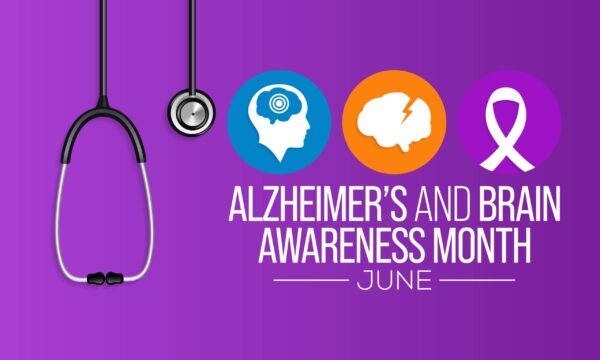
In the midst of June’s fervor for Alzheimer’s awareness, it’s time to recognize that memory matters. This month serves as a rallying cry to join the movement for brain health and take proactive steps to safeguard cognitive function. Let’s delve into practical strategies to champion brain health and honor the importance of memory in our lives.
Prioritizing Brain Health:
Maintaining brain health is crucial for preserving cognitive function and warding off conditions like Alzheimer’s disease. Engage in activities that stimulate the mind, such as puzzles, reading, and learning new skills. Physical exercise is also essential, as it enhances blood flow to the brain and promotes the growth of new brain cells. Make regular exercise a cornerstone of your routine to support long-term brain health.
Nutritional Support for the Brain:
Nutrition plays a pivotal role in brain health. Adopt a brain-boosting diet rich in fruits, vegetables, whole grains, and lean proteins. Incorporate foods high in antioxidants, such as berries, nuts, and leafy greens, to combat oxidative stress and protect brain cells from damage. Additionally, consider supplements like vitamin D and magnesium, which have been linked to improved cognitive function and mood regulation.
Harnessing the Power of Blood Tests:
Blood tests offer a window into our brain health, providing valuable insights for early detection and intervention. Routine blood screenings can assess cholesterol levels, blood sugar levels, and inflammatory markers, which impact brain health. Monitoring these biomarkers allows for timely intervention to mitigate risk factors and optimize brain function.
Insights from Genetic Testing:
Genetic testing empowers individuals to understand their unique risk factors for Alzheimer’s disease. By identifying genetic predispositions early on, individuals can implement personalized strategies to reduce risk and promote brain health. Embrace lifestyle modifications such as maintaining a healthy weight, managing stress, and prioritizing quality sleep to support overall well-being and cognitive vitality.
Conclusion:
As we navigate Alzheimer’s Awareness Month, let’s reaffirm that memory matters. By prioritizing brain health, embracing nutritional support, harnessing the power of blood tests, and gaining insights from genetic testing, we can champion cognitive vitality and honor the importance of memory in our lives. Together, let’s join the movement for brain health and pave the way for a brighter, more resilient future.
Stay tuned for more actionable insights and tips throughout Alzheimer’s and Brain Awareness Month!
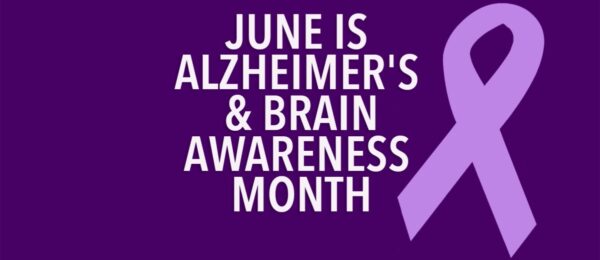
Welcome to June, the month dedicated to unlocking minds and fighting against Alzheimer’s and brain fog. As we delve into this crucial awareness campaign, let’s explore effective strategies to combat Alzheimer’s, enhance brain health, and reclaim our cognitive vitality.
Tackling Alzheimer’s:
Alzheimer’s disease poses a significant challenge to individuals and families worldwide. However, advancements in treatments offer hope. From pharmaceutical interventions to lifestyle modifications, there’s a range of approaches to explore. Consult with healthcare professionals to explore options like acetylcholinesterase inhibitors or memantine, which can help manage symptoms and slow disease progression.
Harnessing the Power of Vitamins:
Vitamins play a crucial role in brain health. Incorporating nutrient-rich foods and supplements can provide essential support. Vitamin E, for instance, acts as an antioxidant, protecting brain cells from damage. Omega-3 fatty acids, found in fish oil supplements, promote brain function and may reduce the risk of cognitive decline. Ensure you’re getting an adequate intake of vitamins B6, B12, and folate, as deficiencies have been linked to cognitive impairment.
Blood Tests for Early Detection:
Early detection of Alzheimer’s is key to effective management. Blood tests are emerging as promising tools for diagnosing Alzheimer’s disease, offering a non-invasive and cost-effective alternative to traditional methods. Biomarkers such as amyloid beta and tau proteins can indicate the presence of Alzheimer’s pathology years before symptoms manifest. Speak with your healthcare provider about incorporating these tests into your wellness routine for proactive monitoring.
Unlocking Genetic Insights:
Genetic predisposition plays a role in Alzheimer’s risk. DNA tests, such as genetic screening for the APOE ε4 allele, can provide valuable insights into individual susceptibility. While genetic factors influence Alzheimer’s risk, they don’t determine destiny. Armed with this knowledge, individuals can adopt lifestyle measures to mitigate risk factors and promote brain health.
This June, let’s unite in the fight against Alzheimer’s and brain fog. By embracing treatments, optimizing vitamin intake, leveraging blood tests for early detection, and unlocking genetic insights, we can empower ourselves in the battle for cognitive vitality. Together, we can unlock minds and pave the way for a brighter, brain-healthy future.
Stay tuned for more insights and actionable tips throughout Alzheimer’s and Brain Awareness Month!
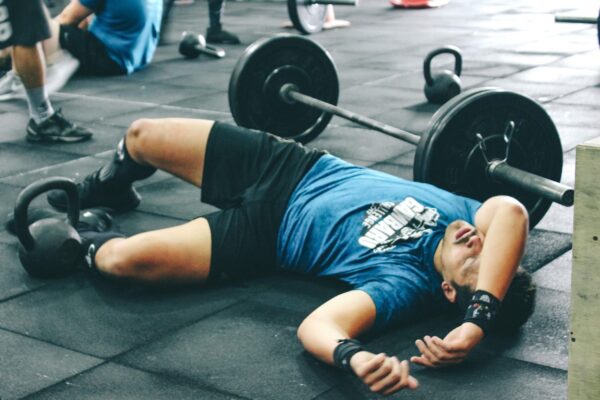
In the ever-evolving landscape of fitness, the pursuit of a healthier lifestyle has transcended the traditional realms of intense workouts. This blog delves into the transformative journey of the fitness industry, highlighting the growing importance of recovery and wellness services. Beyond the sweat-drenched workouts, a new era is emerging—one that embraces a holistic approach to well-being.
Rethinking Fitness: A Holistic Perspective
Gone are the days when fitness was synonymous with grueling workouts and sweat-soaked gym sessions. The evolving mindset of fitness enthusiasts is steering towards a holistic perspective that encompasses physical, mental, and emotional well-being. The realization that recovery is not just a post-workout necessity but a fundamental aspect of a healthy lifestyle is reshaping the fitness narrative.
The Role of Recovery in Performance Enhancement
While challenging workouts remain crucial for physical fitness, the focus is shifting towards what happens after the sweat session. Recovery is now recognized as a key element in performance enhancement. Athletes and fitness enthusiasts are exploring innovative recovery techniques to optimize their training results, reduce the risk of injuries, and promote long-term sustainability in their fitness journeys.
Personalized Recovery Plans
As the understanding of individual variability in recovery needs grows, the fitness industry is moving towards personalized recovery plans. Tailoring recovery strategies to individual preferences, body types, and fitness goals ensures a more targeted and effective approach. From customized recovery nutrition plans to specific recovery modalities, the emphasis is on providing personalized solutions for each individual.
Integration of Technology in Recovery
Technology is playing a significant role in revolutionizing the recovery aspect of fitness. Wearable devices, fitness apps, and smart recovery tools are empowering individuals to track their recovery progress, monitor vital indicators, and make informed decisions about their wellness routines. This integration of technology fosters a more data-driven and efficient approach to recovery.
Recovery Beyond Physical: Mental and Emotional Well-being
The evolution of fitness now acknowledges that well-being goes beyond physical health. Mental and emotional well-being are gaining prominence as essential components of a holistic fitness journey. Practices such as meditation, mindfulness, and stress management are becoming integral to recovery routines, promoting a balanced and resilient mindset.
Holistic Wellness Centers: A Hub for Comprehensive Well-being
The rise of holistic wellness centers signifies a shift from traditional gyms to comprehensive well-being hubs. These centers offer a spectrum of services, including recovery modalities, fitness classes, mental health resources, and nutritional guidance. They provide a one-stop destination for individuals seeking a well-rounded approach to their health and fitness.
Community and Support in Holistic Fitness
The evolving fitness landscape is fostering a sense of community and support. Whether through fitness classes, online forums, or social media groups, individuals are connecting to share their experiences, challenges, and triumphs in their holistic fitness journeys. This sense of community serves as a motivational force, encouraging individuals to prioritize their well-being in a supportive environment.
Paradigms and Transcendents
The evolution of fitness is a dynamic journey that transcends the limitations of traditional workout paradigms. Embracing recovery and wellness services as integral components of a holistic fitness approach paves the way for a more sustainable and fulfilling health journey. Beyond the sweat, fitness enthusiasts are discovering the transformative power of recovery, not just for physical performance but for fostering a balanced and thriving life. The future of fitness is one that goes beyond the gym floor, incorporating recovery and wellness as pillars of a comprehensive and holistic well-being strategy.

In the ever-evolving landscape of fitness, a significant shift has occurred as people increasingly recognize the profound impact of recovery and wellness on their overall well-being. This paradigm shift is not only transforming individual health practices but is also reshaping the very fabric of the fitness industry. From high-intensity workouts to recovery and rejuvenation, the holistic approach to fitness is gaining momentum, with gyms and fitness studios leading the charge.
Understanding the Importance of Recovery
Beyond the intensity of workouts, recovery has emerged as a crucial component of a well-rounded fitness routine. Recognizing the need for balance, individuals are prioritizing recovery to enhance performance, prevent injuries, and promote overall health. This awareness has sparked a revolution in the fitness industry, where recovery is not merely an afterthought but an integral part of the fitness journey.
Diversification of Fitness Services
Gone are the days when fitness centers solely focused on strenuous workouts. The current trend sees gyms and studios diversifying their offerings to include an array of recovery and wellness services. These services go beyond the conventional, embracing innovative approaches like cryotherapy, infrared saunas, and massage therapy to address both physical and mental recovery.
Cryotherapy: Chilling for Healing
Cryotherapy, the practice of exposing the body to extremely cold temperatures for short periods, has gained popularity for its potential benefits in reducing inflammation, relieving muscle soreness, and even boosting metabolism. Fitness enthusiasts are turning to cryotherapy chambers as a cutting-edge method to expedite recovery and optimize their performance.
Infrared Saunas: The Warmth of Well-Being
Infrared saunas, with their gentle heat penetrating the body, have become a favored choice for recovery. Beyond relaxation, these saunas are believed to promote detoxification, improve circulation, and alleviate muscle tension. The embrace of infrared saunas in fitness studios reflects a commitment to holistic well-being.
Massage Therapy: Healing Hands for Holistic Health
Massage therapy, a timeless practice, has found a new home in fitness centers. Beyond being a luxurious indulgence, massages are recognized for their therapeutic benefits, promoting muscle recovery, reducing stress, and enhancing flexibility. The integration of massage therapy into fitness services is a testament to the industry’s dedication to comprehensive wellness.
The Future of Fitness
As recovery and wellness services continue to weave themselves into the fabric of the fitness industry, we witness the emergence of a more comprehensive and holistic approach to health. The future of fitness lies not only in the intensity of workouts but in the thoughtful integration of recovery practices that nurture the body, mind, and spirit.
In this transformative era, where recovery is no longer a luxury but a necessity, fitness enthusiasts are not just sculpting their bodies—they’re cultivating a lifestyle of holistic well-being. The gyms and fitness studios of today are not just spaces for sweat and exertion; they are sanctuaries for recovery, rejuvenation, and the pursuit of optimal health. Embrace the revolution—where fitness is not a race but a journey towards holistic vitality.

As we peer into the not-so-distant future, the concept of fitness in the metaverse emerges as a fascinating, albeit perplexing, phenomenon. Are virtual and augmented reality (VR and AR) workouts truly the next frontier of fitness, or is this just another passing trend? The assertions about their growth in popularity in 2024 beg the question: can these immersive experiences genuinely redefine the way we approach exercise?
Immersive Fitness: A Game-Changer or a Gimmick?
The promise of a unique and immersive fitness experience is undoubtedly intriguing. The thought of donning VR headsets or engaging in AR-enhanced workouts brings a sense of novelty to the fitness realm. But, one might wonder, does the immersion translate to efficacy? Can these experiences genuinely rival the tangible benefits of traditional workouts, or are they more of a gimmick that appeals to our collective fascination with cutting-edge technology?
Accessibility for All: A True Game-Changer?
The assertion that VR and AR workouts can be accessible for people with disabilities or mobility issues raises essential questions about inclusivity in the fitness landscape. While the idea of breaking down physical barriers is commendable, one might ponder: do these technologies truly cater to the diverse needs of individuals with varying abilities? How seamless is the integration, and does it genuinely provide an inclusive fitness experience for everyone?
The Future: A Technological Triumph or Ethereal Experiment?
2024 is painted as the year when VR and AR workouts will thrive. Yet, we can’t help but question the long-term implications. Is this a lasting shift in the fitness paradigm, or are we witnessing an ethereal experiment that will fade away as swiftly as it appeared? Can virtual fitness truly replace the tangible connections forged in physical spaces like gyms and studios, or is it a supplement rather than a substitution?
In the metaverse, where the lines between reality and virtuality blur, the future of fitness appears to be both thrilling and enigmatic. As we navigate this uncharted territory, let’s question, explore, and critically assess whether the immersive promise of VR and AR workouts is a transformative leap into a new era of fitness or a fleeting mirage in the evolving landscape of wellness. Is this the dawn of a revolutionary fitness experience, or are we merely playing a captivating game within the metaverse? Only time will reveal the answers, and until then, let the questioning continue.


